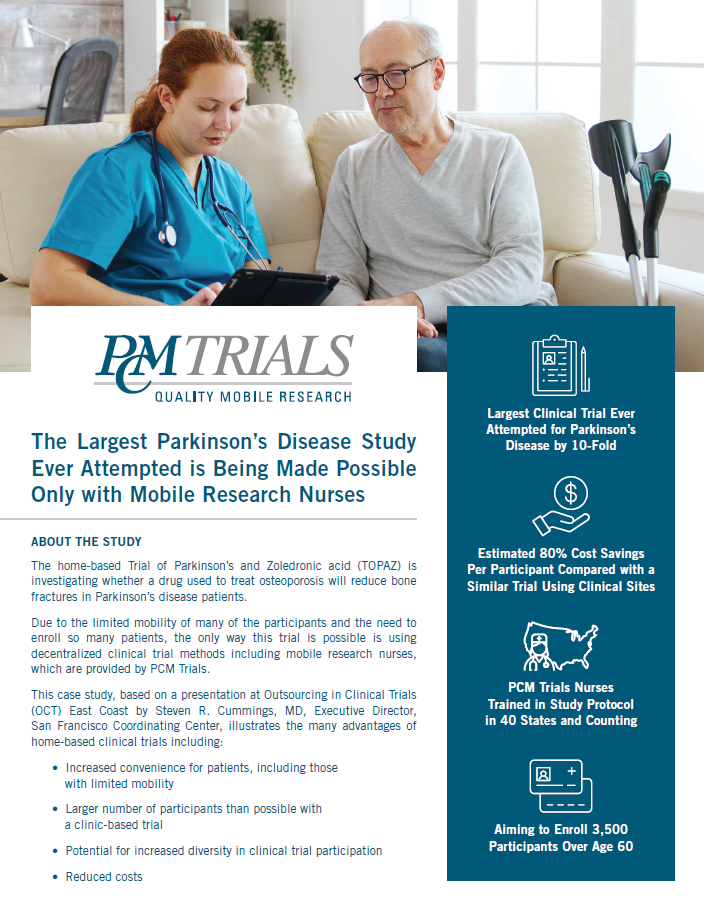The inclusion of female participants in clinical trials has been a never-ending battle for almost three decades. The historical tragedy of thalidomide has resulted in a lack of evidence-based clinical research and medicine for women who are pregnant or may become pregnant. Even though female participation in clinical trials is slowly improving, the pregnant population is still left behind.
Certain justifications that are routinely used for not including pregnant people in clinical trials should be rethought moving forward, says Miranda Waggoner, PhD, associate professor of sociology at Florida State University. She explains that thalidomide was a tragedy in large part because it was not responsibly studied during pregnancy before it was given to pregnant people. This event had the potential to become a catalyst for expanding and improving responsible studies of drugs in pregnancy, but instead, it led to scientific abandonment.
One of the more recent examples of pregnancy exclusion is in Covid-19 vaccine trials. Like many other viral, bacterial, and parasitic infections, Covid-19 can cause worse outcomes in pregnant individuals, says Dr Richard Beigi, president of UPMC Magee-Womens Hospital. He adds that Covid-19 is an illustrious example of when fear of enrolment translates into the investigational drug being perceived as unsafe.
“Pregnant people experience illness, and they deserve to be prescribed drugs that have been well studied and that are dosed correctly,” Waggoner says. Experts tell Clinical Trials Arena how the lack of clinical trial data burdens the patients and potentially puts them in danger. Also, they explain how to design clinical trials to safely include this patient population.
Lack of randomised controlled trial evidence
The treatment of many conditions during pregnancy or lactation relies on historic drugs that only have observational data to confirm safety, tells Dr Harriette Van Spall, associate professor of medicine at McMaster University in Canada. However, the lack of actual clinical trial data puts a burden on the patient and physician to decide if the treatment is safe to continue during pregnancy.
This shared decision is based on real-world data, case reports, and any available information about the outcomes among women who have taken the drug, says Dr Tracy Caroline Bank, Maternal Fetal Medicine fellow at Ohio State University. She shares that one of her patients with Crohn’s disease came to consult about continuing on her biologic therapy during pregnancy. Bank explains that there is no data to suggest that the drug is dangerous, and it is probably safer to keep administrating the drug than discontinue it. “That is a situation where we didn’t have any good data to guide our counselling,” she adds.
How well do you really know your competitors?
Access the most comprehensive Company Profiles on the market, powered by GlobalData. Save hours of research. Gain competitive edge.

Thank you!
Your download email will arrive shortly
Not ready to buy yet? Download a free sample
We are confident about the unique quality of our Company Profiles. However, we want you to make the most beneficial decision for your business, so we offer a free sample that you can download by submitting the below form
By GlobalDataEven though the post-marketing or post hoc data is better than nothing, it is not as optimal as original data from a clinical trial that specifically looks at indications and pregnancy, Beigi says. “It pushes a burden on the pregnant person who has to balance the risk of the disease versus the theoretical risk of the intervention,” he adds.
Non-clinical studies to detect safety signals
While post-marketing analyses are useful, pre-marketing studies are as equally needed, says Dr Diana Bianchi, director of Eunice Kennedy Shriver National Institute of Child Health and Human Development at the National Institutes of Health. The first step would be to include animal models at the very beginning.
Prioritising reproductive toxicity data early in the development of a chemical would enable clinical trialists and companies to feel comfortable about including sub-studies with pregnant people while the drug is in the Phase II or Phase III arena, Beigi says. “It doesn’t need to be a lot, but it needs to be either signal deficient or minimal signals of a risk,” he explains.
However, non-clinical studies can be time-consuming and expensive, which calls for the pharma industry and academia to find alternative methods, says Angela Colbers, PhD, senior researcher at the department of pharmacy at the Radboud University Medical Center in the Netherlands. She suggests finding inspiration from the cosmetic industry, which is minimising the use of animal testing.
Another solution is using in silico computer models to predict pharmacokinetics in pregnancy. “They weren’t there 10 years ago, but they’re here now and their quality in predicting pharmacokinetic changes in pregnancy and foetal exposure is increasing,” Colbers explains.
Powering the study with pregnant individuals
Pharmacokinetic (PK) and pharmacodynamic (PD) studies are crucial in this patient population. Due to hormonal and metabolic changes during pregnancy, as well as the larger volume of blood distribution, the concentration of a drug is lowered, which results in weaker efficacy. The best population in which to conduct PK and PD studies is pregnant people who are already taking drugs, explains Bianchi, naming it a “low-hanging fruit”.
The centre where Colbers works conducts such trials to measure PK changes during pregnancy and shortly after delivery. However, this approach means that researchers are lagging behind to gather the data. She explains that even though a lot of similar research is being done for HIV drugs, the median time between the registration of the drug by the FDA and getting the first PK data is six years. “That’s quite a lot of time, and pregnant women are being exposed to drugs that we don’t know whether they are working properly or not,” she adds.
Another way to gather PK and PD data is by keeping a person on the investigational drug even if they become pregnant during a trial. If sponsors completed non-clinical studies earlier, they could inform participants about the potential risks, include them in a separate sub-study, and follow in a more controlled setting, Colbers suggests.
Overall, it is safer to assess the effect of a therapy on the person and the child in a highly monitored clinical trial environment than on anecdotal and delayed reports from healthcare settings, Van Spall explains.
Informing about the risks
Researchers and sponsors should not assume hesitancy on the part of the pregnant population because it is up to the individual to decide if they want to participate, Waggoner says. “Depending on the circumstances, pregnant people are willing and interested in being part of clinical research studies. One of the reasons is being part of improving the evidence base [medicine] for future pregnant populations and their offspring,” she explains.
The best way to inform the potential participant about what will happen during a trial is to include pregnancy-specific language in the consent forms, Bank says. Having a clear plan for safety monitoring, planning how to address potential theoretical issues, and setting procedures for long-term follow-up will help inform people if participation is an acceptable risk to take, she adds.
While such data might not be enough to classify as an endpoint or show clear conclusions about outcomes in a large study with only a handful of pregnant individuals, collecting such information is still helpful, Bank notes.
Sponsors should also work with active obstetric services and embed some of the clinical trial activities either within the practice or at a site that is more convenient for the participant, Beigi suggests. Additionally, aligning needed bloodwork for pregnancy with some of the study goals and practices can make the participant’s journey easier.
What should happen next?
One of the biggest issues of improving research in pregnancy is getting pharma developers to think that pregnant people as a population need to be included, says Bianchi. One of the major ways that this hesitancy could be supported going forward is by increasing liability protection for sponsors, Bank suggests. This way, sponsors will be assured that it is not going to be the end of their company if something goes wrong. However, even a negative outcome could save thousands of people in the future from getting a potentially dangerous medication and never knowing it, she says.
Financial incentives might also increase research in the pregnant population. Bianchi suggests that the adoption of the Best Pharmaceuticals for Children Act model, which provides additional marketing exclusivity to sponsors who are voluntarily conducting paediatric studies, would push sponsors to conduct more trials with pregnant individuals.
Collaborative work is key for moving towards inclusive science. The inclusion of data safety monitoring committees and appropriate stakeholders, including scientists and clinicians with expertise in maternal-foetal health, can increase the safety and appropriateness of care provided to pregnant or lactating people in clinical trials, Van Spall says.
Ultimately, sponsors should think about the end user of their product, and pregnant people are often the users. “Researchers and sponsors need to be thoughtful about risk because avoiding pharmaceutical-based harm leads to pharmaceutical-based harm,” Waggoner adds.
Takeaways:
- Information on a drug’s safety/efficacy profile during pregnancy relies on historic data or post-marketing analysis. Non-clinical trials in pre-marketing stages can inform about the effects of the investigational drug on the pregnant person and the foetus.
- PK and PD data during pregnancy is crucial. Sponsors should include this population in separate, highly monitored sub-studies if the non-clinical data did not indicate safety signals.
- Including pregnancy-specific language in consent forms will help to inform the participants about potential risks. Increasing liability protection for sponsors and financial incentives could improve research in the pregnant population.








